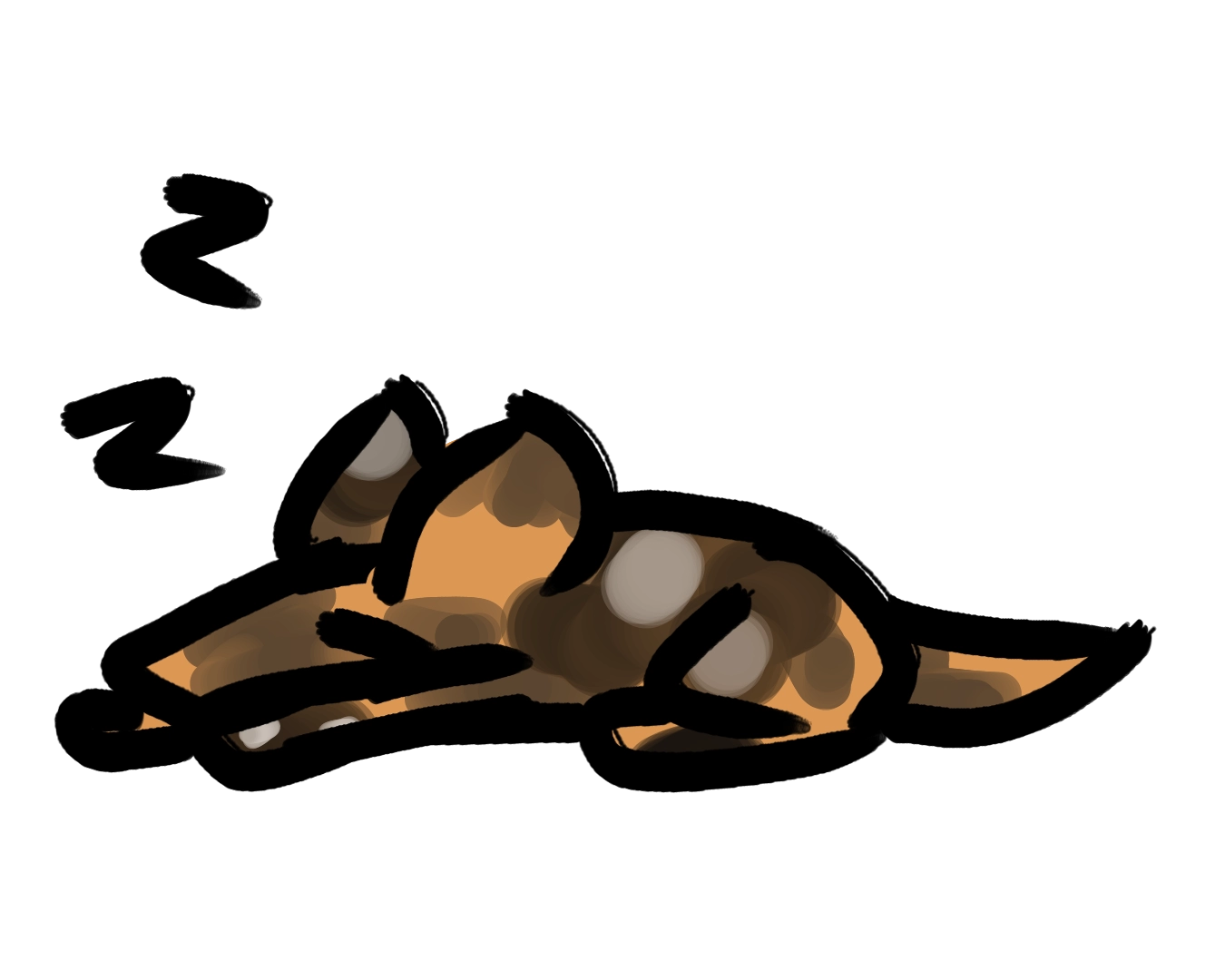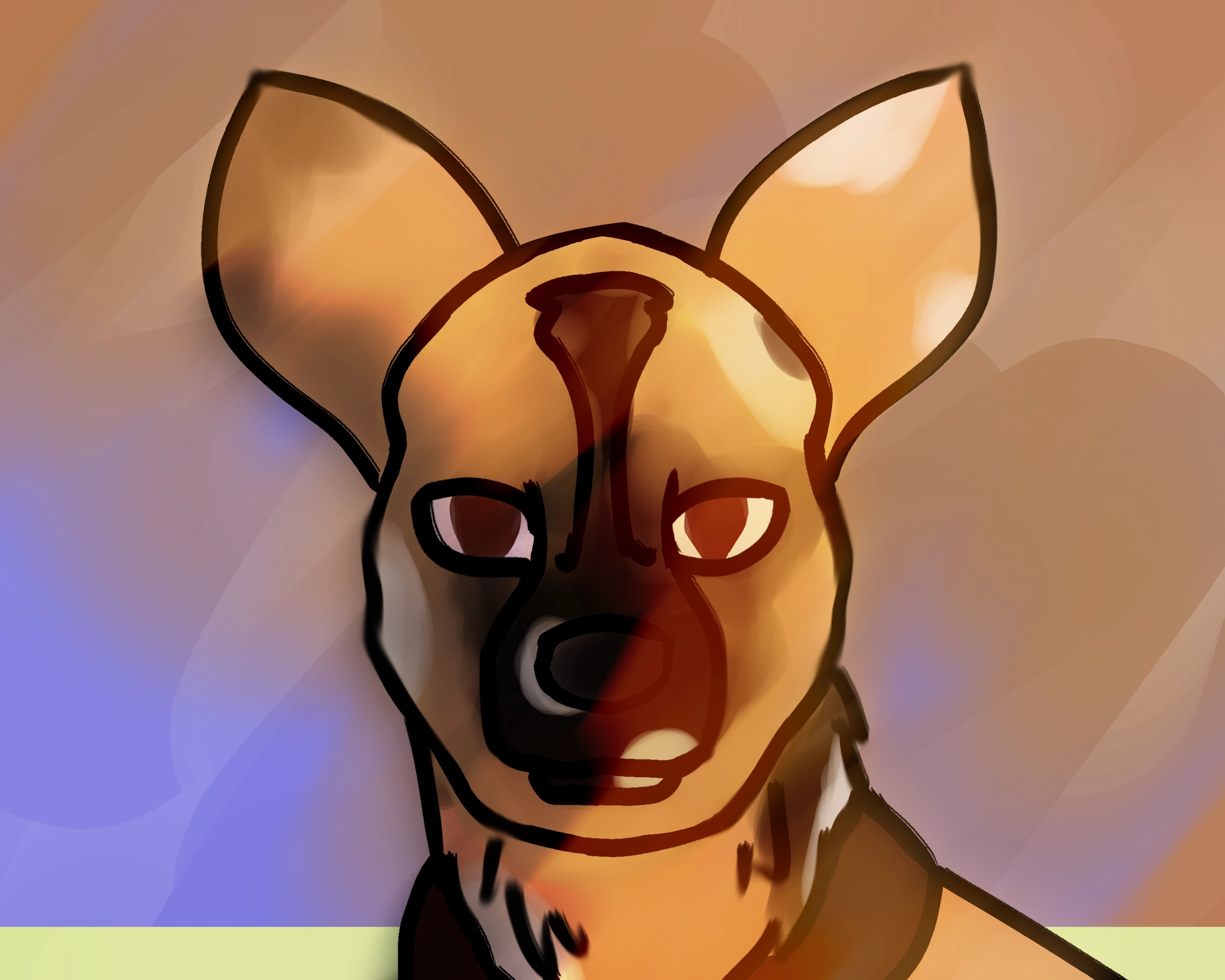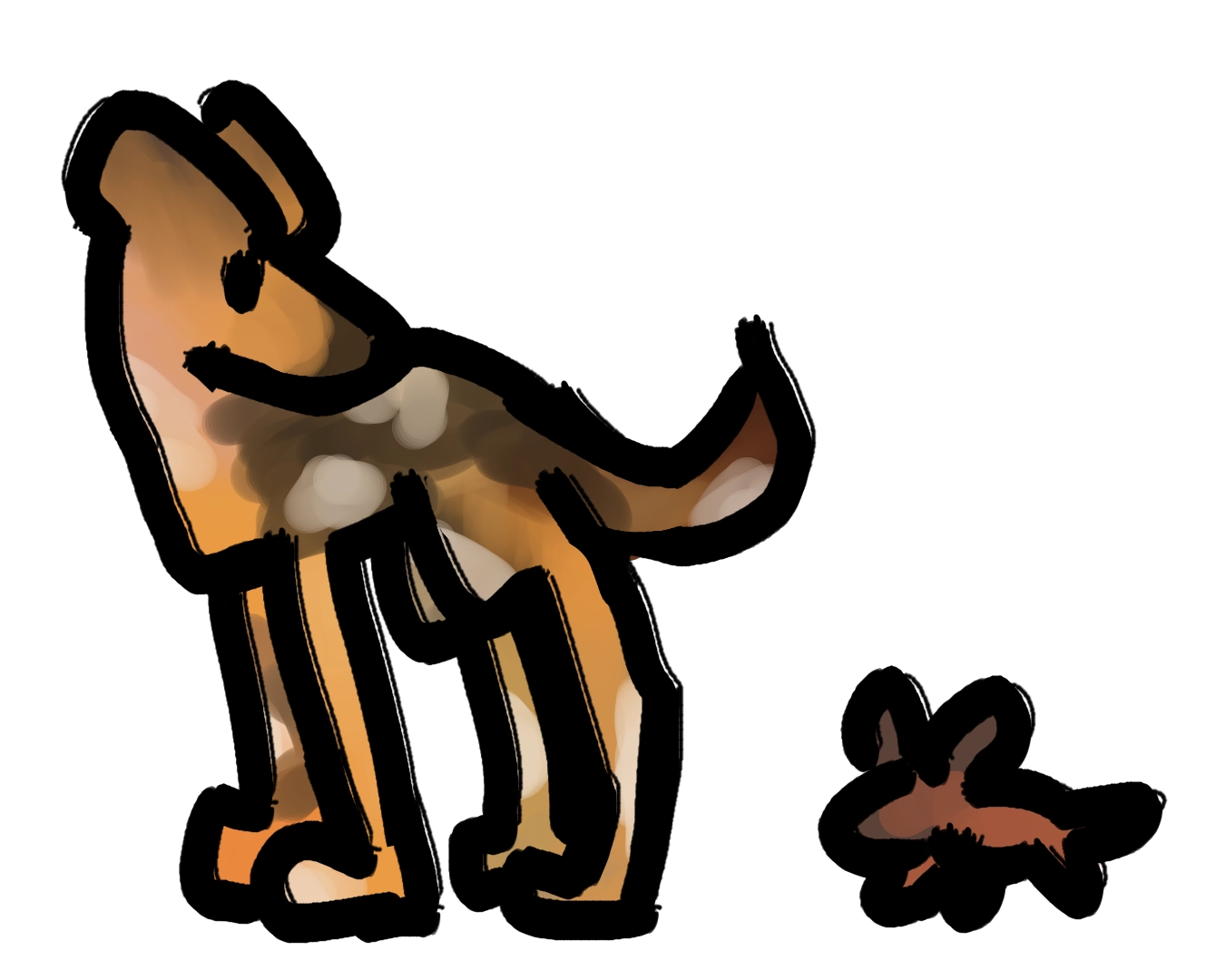Eastern Wild Dog
Not to be confused with a common dog, come on
First domestication
Once the nomads made their way into the Eastern Continents (through the west, huh), they encountered these animals.
But they soon realized that the Eastern Wild Dog was an exceptional hunter, much more so than their own dogs. As a result, they set out to domesticate them.
In fact, it took them months to domesticate even one, but after that it became apparent what the best approach was. Turns out, these animals will show their full respect to anyone who honors them by providing them with food and shelter, among other luxuries.
Further evolution recording
Once some nomads settled down again, they obviously brought some of these dogs with them.The creatures were forced to adapt to their new environments. Some of them became better swimmers, others developed a sharper sense of smell
One of the most note-worthy changes, however, was their new ability to jump...very high. Most speculate that this is due to their new habitats, such as forests and mountains, and they've had to develop this skill so as to be able to survive.
Hence, this is a trait that isn't present in every dog.
Additional Information
Social Structure
If the pack grows too large, the young adults will often form their own and leave their parents behind. This process occurs inadvertedly, but is enabled by the care and lessons the cubs are provided with during their upbringing.
The elder dogs usually stay behind while the younger adults, far stronger and more capable, go hunting. As such, the important task of the cubs' upbringing falls on their shoulders.
Luckily enough, they are able to pass on important skills and knowledge due to their old age, so the adults know their babies are in good hands
Domestication
Instead, if one wishes to domesticate an entire pack, the best way to go about it is to earn the trust of the matriarch. Attention: earn her trust, not taming her, as this would take her out of the pack and the process would have to be repeated with the new leader.
Now, once tamed, they tend to be a little stubborn. This can manifest itself in various ways: rejecting orders, not following commands or just causing chaos. There are several ways to go about this, such as rewarding good behavior or punishing disobedience.
They also love playing, especially when they're young. Spending at least one hour uninterrupted is bound to strengthen one's bond with the animal. Thankfully, they don't ask for much; usually they'll be happy with running around and being chased or chasing someone. They also greatly enjoy hide and seek
Geographic Origin and Distribution
They prefer deserts and plains, as these provide the best terrain for them to make use of their hunting skills to the fullest.

- Charly Darwin, the name of the first dog tamed
- Draconicius, a dog who bravely fought a dragon...baby
- Agata, who saved a baby from a burning village
Trivia
- These dogs don't know how to climb trees, but are particularly skill at climbing them down
- The name 'Eastern' is argued to be 'obsolete' given the geographical expansion the species has undergone over the past thousands of years; yet, no one seems to really care enough to do something about it
- Their hearing is not as fragile as that of a dog's
- Even in the wild, these dogs play hide and seek as an innocent way of training for their upcoming hunts

Remove these ads. Join the Worldbuilders Guild

















A good article, with a good message at the end :)
Creator of Araea, Megacorpolis, and many others.
Thanks! I'm glad you liked it (: